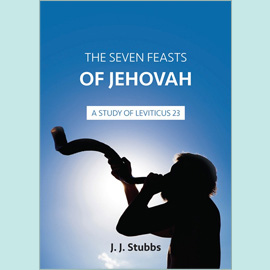What does Paul mean when he speaks of the Body of Christ as being "the fullness of him that filleth all in all" (Eph 1.23)?
Paul states in the previous verse that Christ is the head of the Church. This is our Lord’s present position in relation to the Church. In Colossians 1.18 it is what Christ is to the Church, but in Ephesians we have what the Church is to Christ. In Colossians the Church needs Christ as its Head, but in Ephesians it can be truly said that Christ needs the Church as His body. In divine purpose the place and function of the Church is to be the full expression of Christ. The Church as the body of Christ answers to Christ, or is the complement of Christ. This is how we understand the words, "the fullness of him". It is a wonderful and unique truth found only in Paul’s writings, setting forth the closeness of the Church to Christ and the fact that the Church is controlled by its risen and exalted Head. The words, "filleth all in all", do not refer to all the members of the Church, but rather point, I believe, to the supremacy of Christ in every part of the universe. In the future this unique relationship of the Church will be displayed to a wondering world.
The thought of the Church being the complement of Christ may be seen pictured in Eve in Genesis 2. Eve, the first woman in the Bible, is a clear type of the last woman in the Bible, the Bride, the Church (Rev 19.7; 22.17). God provided in Eve a helpmeet or a companion for Adam and yet she was more to him than a companion. Adam could say, "This is now bone of my bones, and flesh of my flesh" (Gen 2.23). Adam could not find a counterpart or complement in the animal kingdom around him in the garden. As Eve was Adam’s complement, so is the Church to Christ. Eve was in Adam – the rib; she was from him and then she was for him and presented to Adam by God. So the Church was chosen in Christ, is from Christ, and for all eternity will be for Him. All this and more is implied in the words, "the fullness of him that filleth all in all".
John J Stubbs
Since the new Jerusalem will come down from God out of heaven and Christ will also be manifested with His saints, will the saints of the church come back to earth at the time of Christ’s manifestation or will they, as many teach, remain forever in heaven after the rapture?
When Christ returns in glory, saints of this present Church age will be associated with Him, for Paul writes, "When Christ, who is our life, shall appear, then shall ye also appear with him in glory" (Col 3.4).
The questioner makes reference to the "new Jerusalem". According to Revelation 21.1-2, John sees three new things after time and the present heavens and earth have ceased to be: i) a new heaven, ii) a new earth, and iii) the holy city - new Jerusalem. The new Jerusalem, used symbolically of the Church, is not to be confused with a restored Jerusalem on the millennial earth. This city is never called "great": the RV rendering of Revelation 21.10 is "the holy city, Jerusalem" - it is always called the "holy city".
Twice in Revelation 21 (vv.2,10) the holy city is seen coming down from God out of heaven (the third heaven). The coming down of v.2 takes place 1,000 years after the coming down of v.10. The latter is at the commencement of the millennial age, but the former is eternity. In the latter case, the holy city rests over the millennial earth, whilst in the former case the city comes down to the new earth of eternity.
The Church is also seen in the figure of a bride; the angel says to John, "Come hither, I will shew thee the bride, the Lamb’s wife" (Rev 21.9), but John was shown "the holy city, Jerusalem". N.B. It should be acknowledged that some expositors are not happy about the idea of a metaphor describing a metaphor.
All believers of this present dispensation will reign with Christ over the earth in the Millennium; faithfulness and diligence during the period of the Lord’s absence will be rewarded by administrative authority in the Kingdom. Those who dwell upon the millennial earth will have natural bodies; however, believers of the church age will by then have glorified bodies. Their responsibilities during the Millennium, whilst performed in relation to earth, need not necessarily be carried out on earth.
David E West









